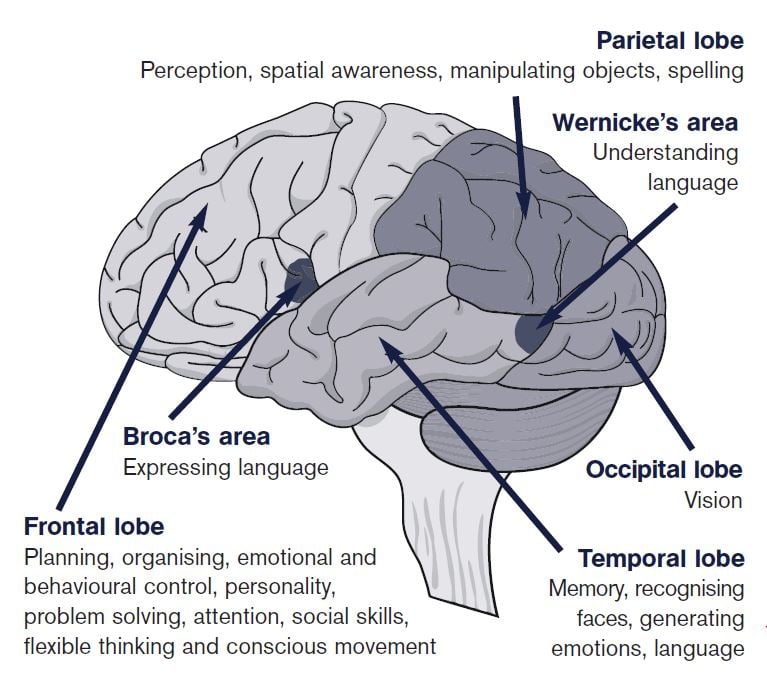Does your child struggle with starting low-reward activities or staying organised? Executive Dysfunction can manifest in difficulties in completing tasks like that, as well as maintaining attention over a period of time or even recalling recent memories.
As one of the more common symptoms of ADHD and autism, understanding Executive Functions and what it affects can help you provide better support for your child’s long-term development.
The Meaning of Executive Functions
Executive Function is a broad term referring to a set of neurocognitive processes (i.e. related to thinking and reasoning). These are directly linked to our ability to feel emotions and adapt behaviours to different social situations.
Our Executive Functions are often called our ‘Higher Order’ skills because of the components involved. This includes our ability to be organised and mentally flexible as well as our ability to plan, inhibit our responses, set goals and attend, to name a few. It is these higher-order processing skills which will help your child succeed in school, at work, and even in their personal lives.
Historically, Executive Function abilities are noted to be synonymous with the Frontal Lobe and more specifically, the Prefrontal Cortex. However, researchers have also identified a seven-circuit scheme known as the ‘Frontal-Subcortical Circuits’ and three of these circuits are notably involved with Executive Functions. In this blog, you’ll learn the importance of each of those Executive Functions and the tremendous effect they can have when it comes to your child’s healthy development.
Image source: https://www.headway.org.uk/about-brain-injury/individuals/effects-of-brain-injury/executive-dysfunction/
How Executive Functions Help in Daily Adult Life
Executive functions are often associated with children and their development, but these skills also play a critical role throughout an adult's life. Understanding and harnessing your executive functions can greatly enhance your productivity, emotional regulation, and ability to navigate complex social interactions. Here's are three ways executive functions impact daily adult life:
-
Enhanced Decision Making
Adult life is filled with decisions, from the mundane to the life-changing. The ability to assess situations, consider possible outcomes, and make informed decisions is rooted in strong executive functioning. This includes everything from choosing what to have for dinner to making financial planning decisions or navigating career moves.
-
Effective Time Management
One of the hallmark challenges of adult life is managing time efficiently. Adults with well-developed executive functions are better at prioritising tasks, estimating the time needed for tasks, and switching between activities without losing productivity. This skill is crucial in both personal and professional contexts, helping individuals meet deadlines and maintain a balanced life. -
Emotional Regulation
The ability to regulate emotions is crucial in maintaining personal and professional relationships. Executive functions help individuals manage their emotions in response to stress, setbacks, or interpersonal conflicts. This means being able to keep cool under pressure, maintain patience, and exhibit empathy—skills that enhance both personal well-being and professional performance.
3 Ways Executive Function Deficiency Affects Child Development
1. Attention Problems or Lack of Focus
Also known as the ‘Executor of the Brain’ for reasons that will become apparent, the Dorsolateral Prefrontal Circuit is involved in regulating many of our executive functions. It is this circuit that is most crucial for executing goal-directed tasks that your child will encounter at school and at their future job. It is thanks to this circuit that a child can sustain attention and set goals, plan for a new school project, and organise materials for the next class.
So what happens if there is damage or dysfunction to the Dorsolateral Prefrontal Circuit in your child’s brain?
Children with damage to this area often exhibit poor organisational skills, poor problem-solving, difficulty focusing and sustaining attention and decreased fluency. In the classroom, this might present itself with constantly losing lesson materials, forgetting when assignments are due and difficulties planning and getting started on homework.
2. Impulsivity
This circuit is associated with mediating the emotional, social and behavioural aspects of Executive Functions. This includes aspects such as impulsivity, inhibition and social behaviours. Perhaps the most famous example of this dysfunction is one of Phineas Gage.
Phineas Gage is a classic case in Neuropsychology which provided many researchers with insight into the association between the brain and behaviour. Phineas worked on a railway in the early nineteenth century where he was injured following an explosion. It was in this explosion that Phineas suffered damage to his frontal lobe. Luckily, Phineas survived the accident, but it was not long after that a notable difference in his personality, behaviour and social interactions were apparent. Before the accident, Phineas was described as a capable, respected and responsible man. However, following the accident, Phineas began to show no empathy, became impulsive and made crude and socially inappropriate comments.
While this is an extreme case, Phineas does highlight the crucial role the Orbitofrontal Circuit plays in our daily lives and social interaction. Children with damage to this area can exhibit poor judgment, irresponsibility and are often noted to make inappropriate comments and lack self-control in social settings.
3. Apathy and Low Creativity
Finally, we come to the Anterior Cingulate Circuit. This circuit is known for helping us regulate our motivational mechanisms. When this aspect of a child’s brain is damaged or dysfunctional, we often see a clear lack of motivation at school or home and an overall increase in Apathy. Apathy is often referred to as a lack of interest, enthusiasm or concern. In a school setting, this often also presents a lack of creativity and ability to generate new concepts.
What to Do if You Think Your Child is Suffering from an Executive Function Deficiency?
Everyone, including children, tap into these skills in their daily lives and rely on many of these processes to do well in school, at work, and in social situations. However, before you attribute your child’s messy room to an Executive Functioning difficulty, it is important to highlight the development of these skills.
The Prefrontal Cortex is perhaps the most highly interconnected neocortical region of the brain and so it is of no surprise that it is one of the last brain regions to reach maturation. Many researchers speculate that the Prefrontal Cortex does not reach full maturation until the age of 25.
While that doesn’t mean you’ll need to wait until your child is 25 to see a spotless room, it does mean that our brain is continuously learning. Many of our Executive Function skills are constantly developing as we grow and learn through experience. We learn to adapt new techniques following our experiences and learn how to tackle daily life stress using these skills.
How can OT&P help?
Reaching out to a specialist regarding your child’s development may initially seem overwhelming. It is important to know that our services are designed to not only help children with existing problems, but we can also help bring out the best in your child according to their development path.
If you’d like to learn more about where your child is currently on their developmental journey and how to support them best, consider visiting our mental wellness clinic, MindWorX. We have a range of psychoeducation services and experienced child development professionals who can help your child excel at school and out.

Rachel Chan Mazariegos
- MSc (UK), BSc (UK)
- RQTU (BPS), MBPsS (BPS)
- ABSNP (US)
- PCBT
- International Affiliate of the American Psychological Association
- Member of the Hong Kong Psychotherapy Society
- Full Membership of the International Neuropsychological Society
Health Articles by Rachel Chan Mazariegos
References
- Dias, N. M., Trevisan, B. T., León, C. B. R., Prust, A. P., & Seabra, A. G. (2017). Can executive functions predict behavior in preschool children? Psychology & Neuroscience, 10(4), 383–393. doi: 10.1037/pne0000104
- Miller, D. C., & Maricle, D. E. (2019). Essentials of school neuropsychological assessment. Hoboken, NJ: Wiley.
- Pureza, J. R., Gonçalves, H. A., Branco, L., Grassi-Oliveira, R., & Fonseca, R. P. (2013). Executive functions in late childhood: Age differences among groups. Psychology & Neuroscience, 6(1), 79–88. doi: 10.3922/j.psns.2013.1.12
- Pureza, J. R., Jacobsen, G. M., Oliveira, R. G., & Fonseca, R. P. (2011). Relationships between executive functions tasks in late childhood. Psychology & Neuroscience, 4(3), 369–376. doi: 10.3922/j.psns.2011.3.010
- Sharma, S., Arain, Mathur, Rais, Nel, Sandhu, … Johal. (2013). Maturation of the adolescent brain. Neuropsychiatric Disease and Treatment, 449. doi: 10.2147/ndt.s39776
 Central General Practice
Central General Practice
 Repulse Bay
Repulse Bay
 Clearwater Bay
Clearwater Bay
 BodyWorX Clinic
BodyWorX Clinic
 Central Specialist Clinic
Central Specialist Clinic
 MindWorX Clinic
MindWorX Clinic
 Partner Clinics
Partner Clinics
 Family Clinic
Family Clinic
 OT&P Annerley Midwives Clinic
OT&P Annerley Midwives Clinic














